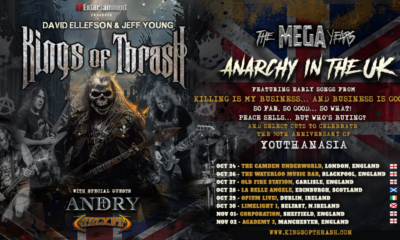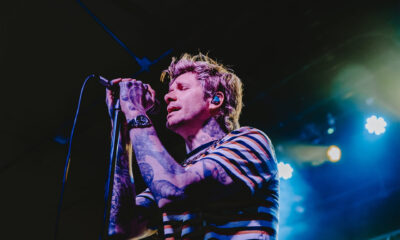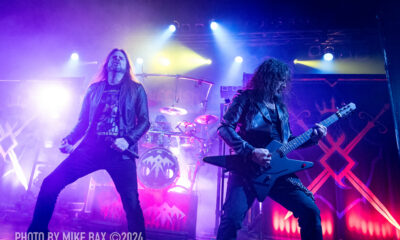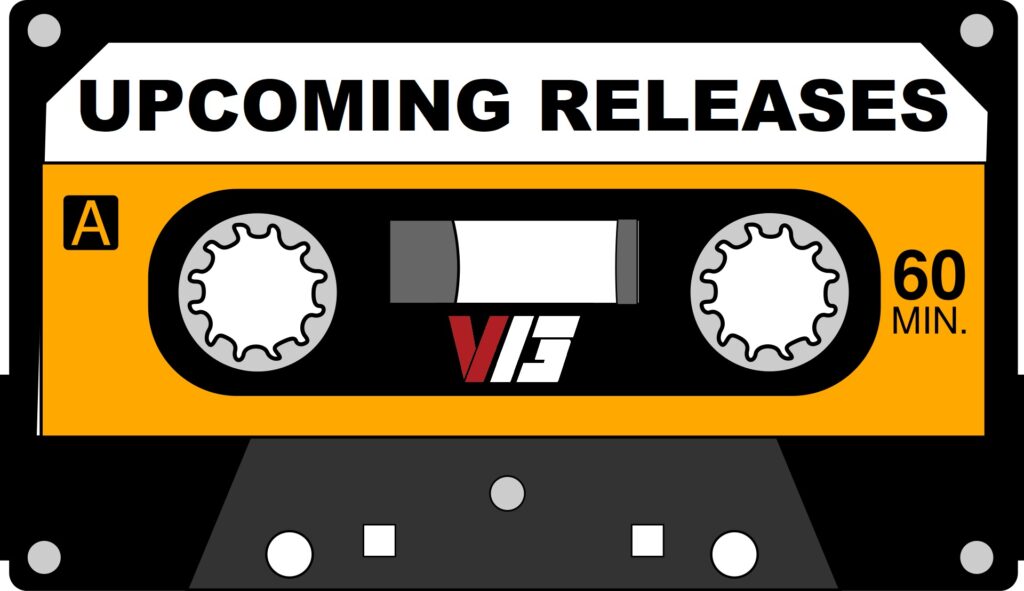Interviews
Voïvod’s Michel “Away” Langevin on ‘Synchro Anarchy,’ Longevity, and Pivotal Moments in Their History [w/ Audio]
Voïvod drummer Michel “Away” Langevin chats about the band’s 15th full-length album, ‘Synchro Anarchy’ (Century Media), their incredible longevity, and pivotal moments in their history.
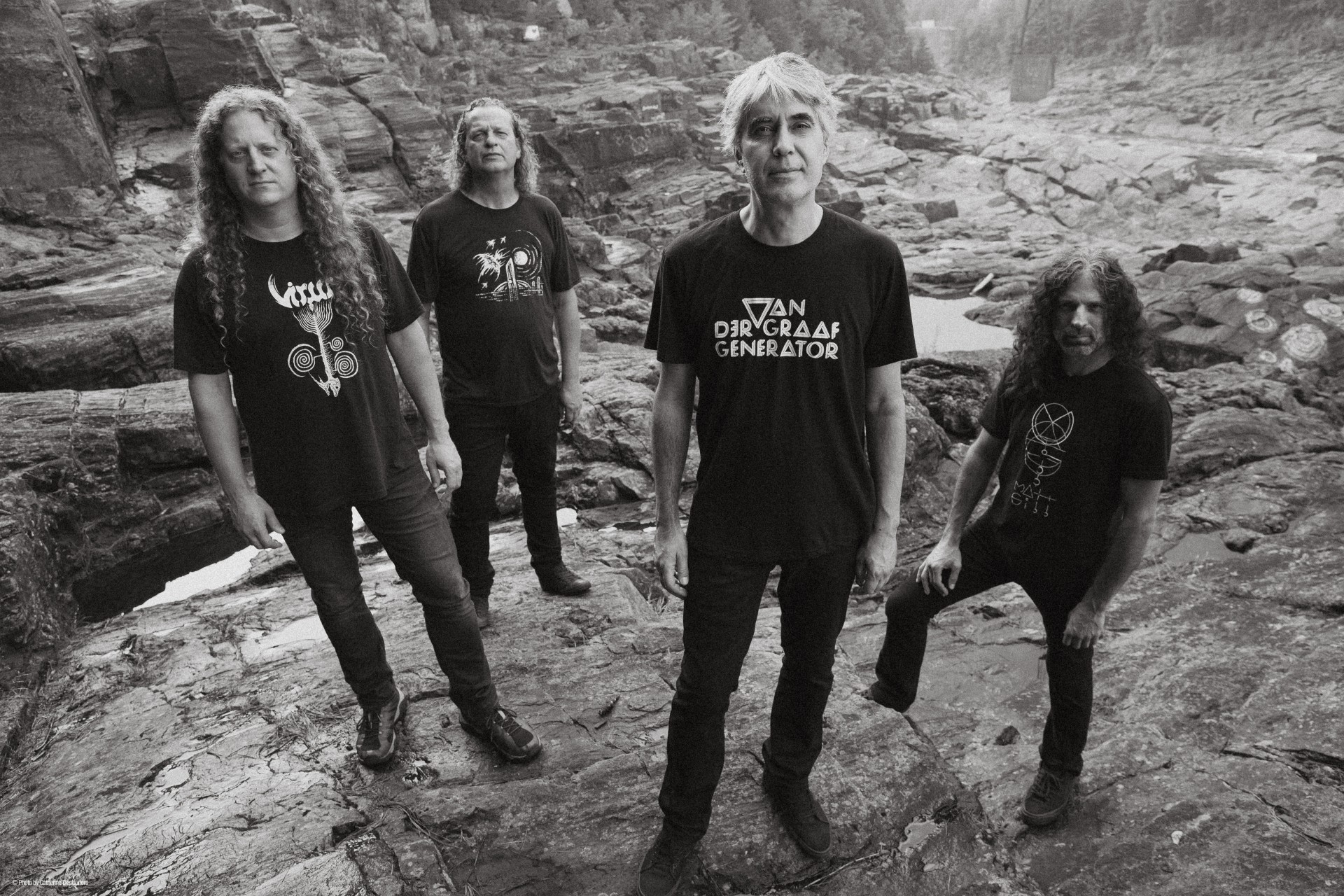
A few months ago, Voïvod released their 15th full-length album, Synchro Anarchy, on Century Media, an album they put together trying to navigate the COVID-19 pandemic’s restriction protocols.
“It was a challenge, because we couldn’t jam together very much, but we all welcomed the circumstances as a new creative element. Lots of demos and files were shared, and it was all worked to the point where it really sounded like the four of us playing in the same room. We could get together and try the ideas out just before the recording process to make all the small adjustments.” –Daniel “Chewy” Mongrain – Guitar
Still considered one of the most creative bands on the planet, Voïvod has unearthed another sonic monster with Synchro Anarchy. Boasting some of the finest reviews of the band’s four-decade-long career, Synchro Anarchy will light up your 2022 with crazed, lysergic glee. The album’s architects are planning their next around-the-world campaign, armed with some of the finest music they have ever written.
The Synchro Anarchy Tour starts June 1st! There will not be much touring this year so see the band where you can and browse the exclusive tour merch. Get your tickets now, don’t delay! You can find more information on the band’s official website.
Despite the pressures of working amid a global pandemic, Synchro Anarchy sounds like the work of genuinely liberated artists. Following the career peak of The Wake was always going to be tricky. Still, the Canadians have smashed the follow-up out of the park, delivering one of the most idiosyncratic and adventurous expressions of their unique, genre-bending sound yet. Fans old and new can expect something truly mind-blowing this time around.
Our heartfelt thanks to drummer Michel Langevin for taking a healthy chunk out of his afternoon last week to field a few questions for V13 via Zoom. The audio and video are available here via SoundCloud and YouTube, respectively, if you’d prefer to hear/watch his answers in real-time.
So tell me, 40 years. That’s a long frigging time to be in a band! Can you talk a little bit about the longevity of Voïvod?
Michel Langevin: “Yeah, who would have known? We formed in January of 1983. So we are getting ready to celebrate the 40th next year with a bunch of releases and all that. But back then, coming from Northern Quebec, taking French and all that, it didn’t seem like it could be real for us, but all of a sudden, we got a deal with Metal Blade, and the album had a strong impact, and so we all dropped out of school and decided to try it, you know?”
How old were you guys when you did that?
“Oh, we were 19 and 20. I think Snake (Denis Bélanger) was 18.”
So no backup plan or anything; you were just going to give music a try. And if it didn’t work out, was there something you were going to do instead?
“Well, on my end, I was going to university when the first album came out, and it’s really since it had a good impact on the new scene with Slayer, Metallica, and all that. That’s where I thought we really could have a career, and so that’s why I dropped out of university. So I had the dreadful supper where I had to tell my parents that I was leaving university and science because I wanted to make it with my heavy metal band.
Yeah, I’m sure they weren’t impressed.
“And now, you know, 39 years later; of course, our parents are really proud of the achievement and all that, so it turned out to be pretty good.”
Right? In the early 1980s, if any kid went to their parents and said, “I want to play heavy metal music,” they would have just freaked out, so I totally get that.
“We were pretty underground for a long while there until we finally had more of a spotlight with ‘Astronomy Domine,’ and the album Nothingface, but we worked for six, seven years. First, in the mid-1980s, we decided to move to Montreal; and all together in the same apartment. But we only had 150 dollars each from welfare, so it was pretty tough. We were in between deals too, so it took a couple of years before we were able to have a deal for the album Rrröööaaarrr, with Noise International, so we were pretty dedicated; rehearsing every night and developing the concept together and the music.
And things were moving really fast. At one point, when we finally got the deal with Noise and started to tour internationally, things were going really fast with an album a year and a world tour a year. These were crazy times because we were recording in Berlin, and we had to tour and go right to the studio. So we basically had to write that way. Whenever we would go on tour for one album, we’d have to write the next one to be able to record it at the end of the tour, so it was pretty intense. We did that for three or four years, and it was pretty fun.”

Artwork for the album ‘Synchro Anarchy’ by Voivod
I got to see your band on some music video shows. Before MuchMusic, there was a Friday night thing, a Canadian thing that I think CityTV was attached to. And that’s the first time that I remember seeing Voïvod.
“In the early 1980s, whenever they’d be this Friday night video thing, and then you’d wait and watch four or five awful videos just to get to the Twisted Sister one; so those were different times for sure. But we still realized that it was really important, and it was growing really rapidly. So right away with the first album, we decided to do a video, and we played this demented show here in Montreal in the Old Port, and we decided to document it for the first video; the song ‘Voivod’ from the War and Pain album.”
That’s the video I remember. And at the time, I think in 1985, I was going to Sheridan College for Animation, and two guys were really into extreme music in that class, and they were all over Voïvod. They just thought that it was the best. Especially the vocals on that song, right?
“I’m the artist for the band, and so I try to represent what’s going on visually, and so I had no training, and eventually, I decided to switch to digital art for the album Dimension Hatröss and the videos and all that. So everybody into that type of digital art all of a sudden was interested in Voïvod. However, they were very early experiments I did with a Commodore Amiga, which was a bit limited, but still a wonderful computer. Multimedia before multimedia was really happening, so yeah, I used it a lot. And of course, it has the 1980s grain, but that’s a flavour nowadays.”
I think good for you to try it. A lot of people would just back away and be like, “It’s technology; I don’t want even to attempt it,” you know?
“Many of my friends told me it was not even art because I was not on the canvas or anything like that. But to me, because we were doing a lot of touring and I had to draw the artwork for every album, and since I had no training in art, I just accelerated my process a lot where I was able to really deliver on time. There was one cover; the Killing Technology album. The manager and I had to drive to the office in New York from Montreal. And he came to pick me up, and it was not dried up yet, so we drove across the border and everything. And the painting was on my lap and still getting dry. That was really tight with the deadline.”
Nice, I’m sure they loved that at the border as well, too; “What have you got on your lap there, Sir?”
“You’ve got to explain that weird sci-fi painting. Nowadays, when you can just e-transfer digital files, you know it’s much easier. But back then, I had to mail a couple of my paintings, and you know, it was very scary. And the very first one all the way from Jonquière, where we grew up, to LA to the Metal Blade office, I mailed the first painting, and it was the very first painting I had done. I had done a very small painting for my grandmother in the 1970s in high school, but that was it.
So all of a sudden, it’s, ‘Ok, I’m going to do the front cover.’ Then I heard years later that the people at Metal Blade were really afraid because the drummer was doing the artwork. (laughs) Finally, they all gathered when they got the painting, and they were like, ‘Yeah, it’s not bad at all.’ I think I was able artistically to represent the Cold War era with the futuristic side of Voïvod. I think I nailed it. I’m still very proud of that painting.”

Voivod Band Logo
Your covers always look different, so even if people would scrutinize the artwork or you were like, “I don’t know if it’s art or if it’s good enough to be an album cover,” or whatever. It just stood out from everything else that was in your genre on the rack, so people would look at it because of that.
“Well, it started earlier in the 1970s with the prog-rock, Roger Dean covers, and all that. Whenever I would get into a store, I would immediately get attracted by the Yes album or something like that. But it’s really in 1980, when the first Iron Maiden album came out, that I understood the power of a real striking front cover. Because I went into the store and I saw it immediately amongst all the other albums, and I grabbed it, and then I was like; This is my new favourite band. I had no idea how they sounded.
And when I went home and put the needle on the album, they sounded exactly like what I was hoping they would. And they started exactly like the album cover. So when the time came for me to do the War And Pain album cover, I had that in mind. I thought, ‘ok, let’s make something very representative of the music, but also something that will attract the eye of the kid coming into the store.’ It was a lesson for me, that first Iron Maiden album.”
They owe so much to Derek Riggs. Because I did the same thing, but I bought the cover art; I bought Killers because I thought it was a badass cover and brought it home, and, same deal, I loved it.
“I actually saw that tour for Killers. I hitchhiked to Montreal to see that; the same summer, I saw the No Sleep To Hammersmith tour with Motorhead and Girlschool. And eventually, I was sleeping on the Mobil Montreal. I would show up home days after my mother was freaking out because I was like, I don’t know, 17 or 18, you know? I would disappear for three to four days.”
It’s all good; it all worked out.
“Well, you know, when I came back from seeing the No Sleep To Hammersmith tour, that’s really when I thought, ok, I want to do that in my life. By then, I had jammed a couple of times with Piggy (Denis D’Amour), and I phoned him, and I said, ‘Ok, I think I want to do it.’ It was really the trigger.”
So how different would you say your approach to crafting new music as compared to when you were starting 40 years ago?
“Well, that’s a good question. Back then, I tried not to overthink it, but back then, I was trying to incorporate what I had learned from heavy metal, punk, and progressive rock and trying to combine the three of them. Eventually, there was one trick that I always kept. Whenever in the 1970s I heard a Van der Graaf Generator album, I would immediately notice that the drummer was sort of drumming backward, where he would hit the snare at a different time than you would expect it to be hit. I always had that in mind, where I would think, ‘Ok, the first beat that comes to my mind is this? I’ll do the opposite.’
And then it would often catch the other members by surprise, but once they get it, they get into it, and I think it has become part of the Voïvod style in a way. But the challenge over the decades became trying not to repeat myself. And I mainly focus on that nowadays. I’m also trying not to repeat a beat that I’ve done many times. Of course, the beat that I love the most is the Philthy Animal Taylor; the Motorhead beat (r the D beat in hardcore), they’ll always be that in the mixture. But I must say that with the new sort of fusion metal that we’re playing these days, it’s a great challenge for me where I have to go back to my Magma / Soft Machine / Terry Bozzio roots, you know? I think it’s pretty fun.”
Nice. How involved do you and Snake stay in the marketing of Voïvod? Obviously, the visuals you’re still involved with, but when you think about how your band and your material are going to be represented out to the public, do you stay involved with that, or do you let your marketing team handle all of it?
“Well, I must say that with Century Media, Sony, we are in very good hands in terms of marketing, and so we are mainly involved in doing a lot of interviews, and we’ve done more than ever for our Synchro Anarchy album, and we’ve had a great response. I’m pretty pleased with it.”
Good. I think the new album is great; I played it through a number of times. The last tune “Memory Failure.” It’s the tune that I like the most
“Chewie (guitarist Daniel Mongrain) wrote this whole song very quickly because he felt like we needed one more song, and it turns out that it’s a song that many, many people like. It’s very vintage Voïvod to my ears.”
There is a shine on it for some reason, and I don’t know why that is, but I like albums that end on a high note rather than that sort of that slow fade-out long song. It’s just like you all went, “We’re going to put one of the best songs as the very last song on the album.” And I thought that was clever.
“Yeah, this one, because of circumstances with the pandemic and all that, we sort of had to wing it really. And we couldn’t think about doing something like The Wake where there would be interludes and a long concept album and all that. So we thought we would do a shorter album that would fit on one vinyl and something very urgent. We were doing a lot of festivals in the province of Quebec and streaming shows while we were recording the album; it was a very intense time.
By the time we finished the whole thing and delivered the masters, we were pretty burned out and also a bit anxious because we did put the pressure on our shoulders. We wanted it to be at least as good as The Wake, which was really well received, and we got a Juno and all that. So whenever the first single, ‘Planet Eaters,’ came out and we saw that their reaction was amazing, we were immediately relieved because it was hard for us to step back and look at it as a whole product really.”
I like that you just referred to The Wake as a concept album, because I tend to hear ‘concept band’ as a descriptor for Voïvod whenever I’m reading articles. Do you feel that that’s a fair assessment of the type of music you make?
“Yes, definitely. Not all of the albums were full-on concept albums, but many of them were. And we also, primarily through the 1980s, we try to develop the story from one album to the other. Being from Quebec, we were really fans of Emerson, Lake, and Palmer and King Crimson, and so it was in our blood when we formed a band, and we were concepting already. and of course, we listened to a lot of music from Rush growing up as well, and they had the biggest impact, you know?”
When you’re sitting down to write music, do you go in with a theme, do you know in advance that you’re going to do something about futuristic warfare, or the devolving of the planet or whatever, and then start writing? Or do you just start with music?
“Well, it’s really fun with Voïvod the way sometimes the art will influence the lyrics, which influences the music, but sometimes the music will influence the lyrics, which then influences the art. It was especially great on the Synchro Anarchy album, where I might have booked the studio a little early again, and we were writing the music as we were recording and the same with the lyrics and all that. When we decided to jump into the fire and say, ‘Ok, we’re going to deliver the album by this time,’ we realized there was a lot of work to still be done.
On previous others, we had rehearsed a lot prior to getting into the studio, but because of the pandemic, we couldn’t do so, and so everything for the artwork for the booklet was done in the studio while recording the instruments or during the mix at the end. So it’s all intertwined, and I think it’s great. It’s fun for everybody because everybody is involved, and of course, Chewie, the guitar player, is the main songwriter, and then Snake will end up writing lyrics, but we all throw ideas at each other for music and lyrics and art, and it’s very cool. The chemistry is great, I must say, with the band.
So even though we were slowed down for the past two or three years, we were able to release a lot of material and do a few online shows, and a few festival shows last year, even with sanitary protocols. We’re just excited to be a part of Voïvod, really. And we just keep going. We carry on, as we used to say in one song.”
So I was looking at your upcoming tour dates through June, and you’ve got a few festival dates booked after you do that sort of three-week jaunt through North America. Six days in a row?! Not that I’m going to call you guys old, but you are older than a lot of the young bands out there, and they won’t do six days in a row. You’re doing the first, second, third, fourth, fifth, and June 6th, a show every night. That’s impressive.
“That’s really old school. And we did some crazy doors like that in the 1990s with Pro-Pain. We did, I think, 60 or 90 days in the summer. It was crazy. And even the last couple of years and last few years, we toured with our brothers Napalm Death. They are used to no days off at all. And we got used to that a lot. Even when we were like, ‘Ok, we’re going to book one day off here,’ they would go to a town nearby and play one show and come back. So it’s very old school and the underground way, where there’s no money to stand, no extra money and all that.
So, of course, to be able to deliver and play night after night like that, eventually I had to stop the partying aspect, and also I didn’t get many chances to play the drum kit lately, and I tried to ride the bicycle a lot. I try to keep in shape. I must have been around ’98, I think. When I saw Whitesnake in Montreal, and Tommy Aldridge was playing double kick drum for 90 minutes, and he looked pretty old already, and I thought, ‘alright, if I want to be that guy, I’d better stop the partying.’ I’ve really been taking care of myself because it is pretty demanding to play thrash metal for four decades. So I try to keep healthy.”
Nice. Good for you. Is there a certain event in the band’s history that you can think of that was like a turn-key or a time that you would attribute to a bolstering of your awareness and your success as a band?
“Well, I would say a couple of moments brought some attention to the band, and I think when we did the video for ‘Tribal Convictions’ on the album Dimension Hatröss it got a lot of airplay which brought a deal with Universal. And then we did that. And then we did the video for ‘Astronomy Domine,’ which got more airplay. It got a lot. And in 1990, because of that, we got to tour with Soundgarden and Faith No More, and then right after, we toured with Rush. So 1990 was a big highlight for me.
And then, when we joined forces with Jason Newsted, he joined Voïvod and Ozzy at the same time, and then all of a sudden, Voïvod is opening for Ozzy. Then we did many shows, the Ozzfest across North America and then opening for Ozzy across Canada. Back then, Jason was playing two shows a day, you know, for many months. Many months! He is such a warrior. So in 2003, we were back into the spotlight again. And then I would have to jump to the album The Wake, where somehow, as soon as it came out, we were touring in Europe, starting in Romania. As soon as the other came out, clubs were packed; the album was selling. We gained a lot of momentum again.
So these were high points, I would think. Although I would certainly say that in ’86 when we did the North American tour with Celtic Frost static for us and right after we did the European tour with Possessed, it is something really important in the career of Voïvod. And all of that happened because of a festival we organized in Montreal when we were really poor in ’85, called the World War III Festival. We organized this festival where we shared the stage with Celtic Frost, Possessed, Destruction, and Nasty Savage, and then we gave Martin Ain, bassist of Celtic Frost, a rough mix of the album Rrröööaaarrr. And he brought it to Noise International, and that’s where we got the deal.
Otherwise, we were really starving in Montreal at this point; we got some equipment stolen, and we didn’t know what to do; we couldn’t finish. We couldn’t mix the album; we’d run out of money. Of course, there were some low points as well; accidents on the road and the untimely passing of Denis D’Amour, and because of fights and all that. It’s been a long, long career, but I think that there are still more years to come.”
Alright, I’ll finish off with one last one. I’ve already had you for more than 20 minutes. I read a lot of music biographies – so has anything ever been written that any of the members of Voïvod have sanctioned as a biography of the band? And if not, do you think one is coming?
“Yes, there is a book coming next year for the 40th anniversary. Also, documentary by Felipe Belalcazar, who did the Death By Metal documentary, and we’re trying to figure some sort of greatest hits as well for next year. We’ll see what happens. But definitely a book.”
-

 Alternative/Rock6 days ago
Alternative/Rock6 days agoThe Warning Shake the Foundations of a Sold-Out Leeds Stylus [Photos]
-
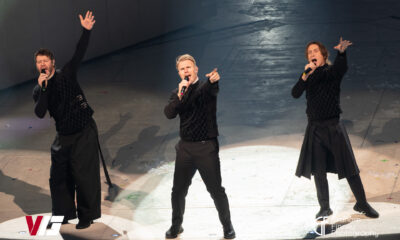
 Music2 weeks ago
Music2 weeks agoTake That (w/ Olly Murs) Kick Off Four-Night Leeds Stint with Hit-Laden Spectacular [Photos]
-
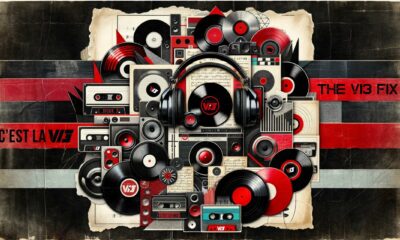
 Alternative/Rock6 days ago
Alternative/Rock6 days agoThe V13 Fix #011 w/ Microwave, Full Of Hell, Cold Years and more
-
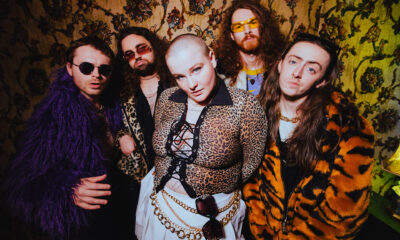
 Features2 weeks ago
Features2 weeks agoTour Diary: Gen & The Degenerates Party Their Way Across America
-
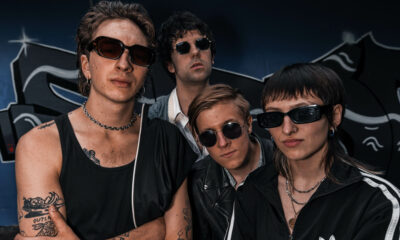
 Indie6 days ago
Indie6 days agoDeadset Premiere Music Video for Addiction-Inspired “Heavy Eyes” Single
-

 Folk7 days ago
Folk7 days agoKatherine Perkins Strikes the Right Tone with Her “Hold On” Music Video Premiere
-

 Country1 week ago
Country1 week agoBrooke Ashton Chats About Her “Someone” Single, Creative Process, and More!
-
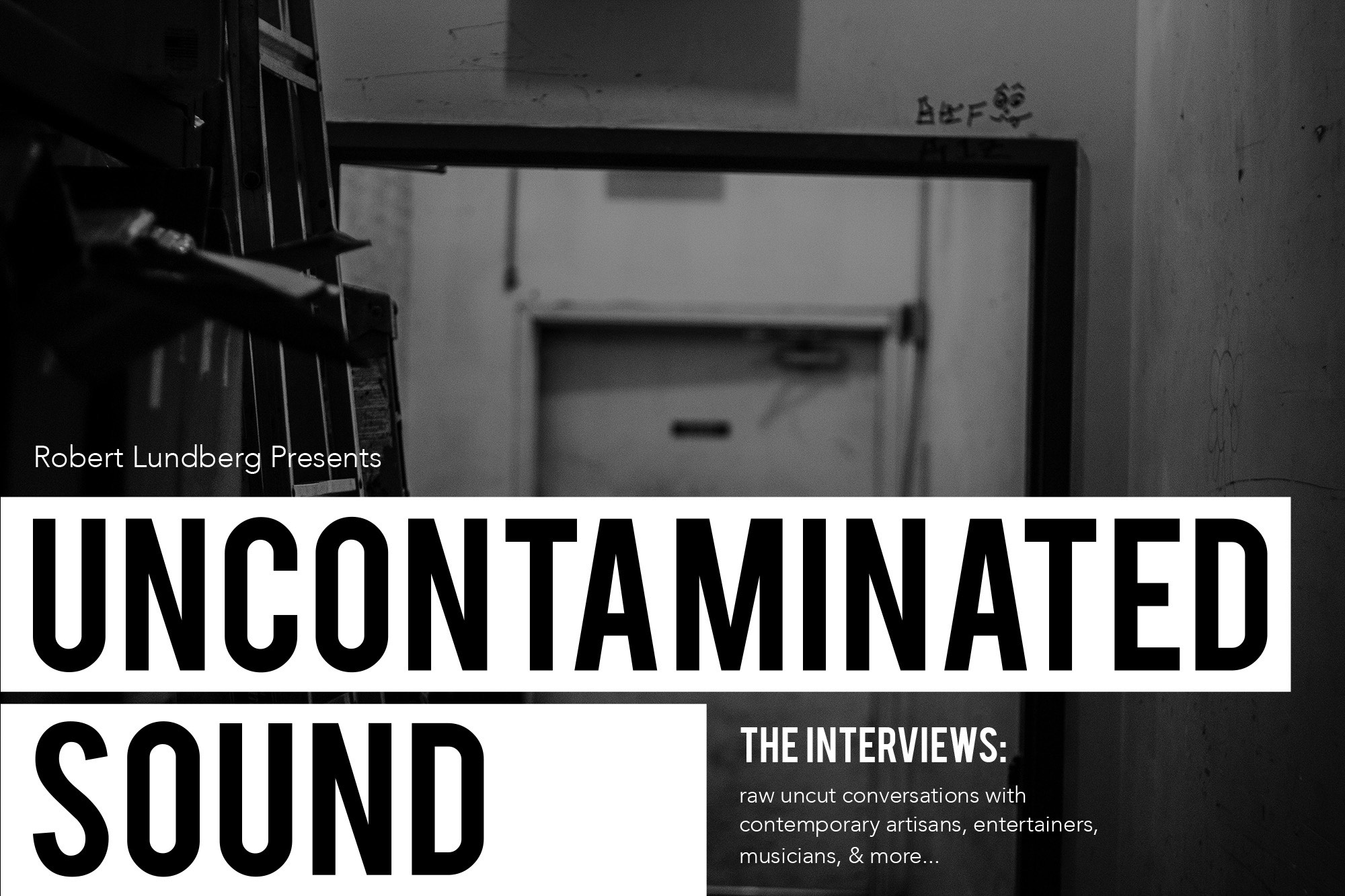
 Culture3 days ago
Culture3 days agoRob Lundberg’s “Uncontaminated Sound – The Interviews” EP #67 w/ Joshua Farinella of The Whistleblower



